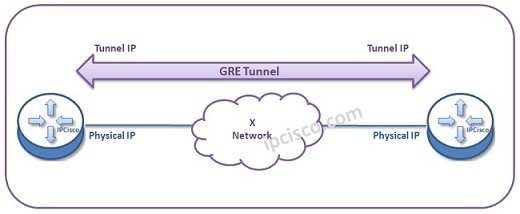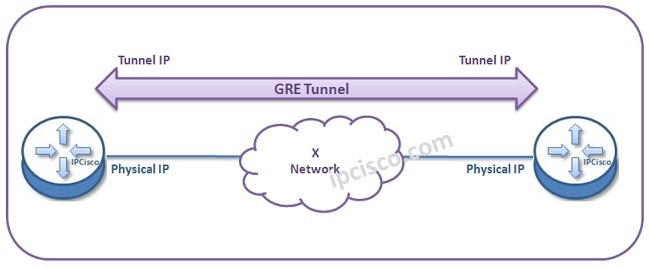- COURSES
- SPECIALS
- BLOG
- MEMBERS
- SHOP
- ABOUT
- ENROLL HERE

GRE (Generic Routing Encapsulation) is the mechanism that encapsulate one protocol in another protocol and provides connection between the nodes. This is done basically IP over IP. A Service Provider Network or Internet is used for GRE (Generic Routing Encapsulation).
GRE provides this communication over a Tunnel.This is called GRE Tunnel. This Tunnel means that there is a transport protocol and a passenger protocol. Tunnel End Points know this passenger protocol but between the end points, the tranportation is done with transport protocol.
With this tunnels, a virtual network is build over a public physical network and different branches of the same company, can cummunicate eachother.
GRE Tunnel configuration is a very simple configuration. To configure a GRE Tunnel, we need two routers that we want to communicate. In thsese routers, firstly, we need to create a Tunnel interface and then we add Tunnel IP Address to this interface. This address will be our Tunnel’s one end IP address. This IP can also be called as passenger IP. After configuring passenger IP, we need to define physical source and destination of our Tunnel. To do this, we will give the real interface IP’s of Tunnel start and end points.

As you can see above, for a GRE Tunnel, there are two important IPs and you must not mix them. These IPs are:
• Tunnel IP Addresses
• Physical IP Addresses